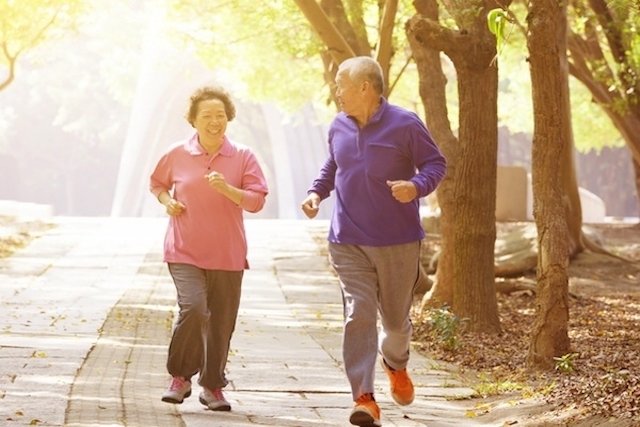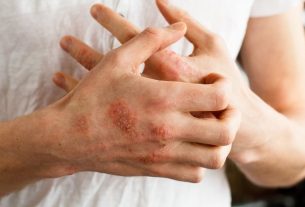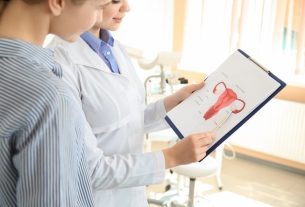Symptoms of osteoporosis, such as back pain, decreased body height, tingling sensation in the legs or hip pain, generally arise when fractures occur in the bones due to greater bone fragility, as a result of a decrease in minerals such as calcium and phosphorus. , for example.
Osteoporosis is a loss of bone mass, which is common to occur in post-menopause, but it can also appear in men over 65 years of age, or people who have hyperthyroidism, trauma or tumors, or use corticosteroid medications or have a low intake of foods rich in calcium.
In most cases, osteoporosis is a silent disease, causing no initial symptoms, but as the disease progresses, fractures may occur, which may occur after a fall or some physical effort. That is why it is important to follow up with an orthopedist for the prevention and treatment of osteoporosis. Learn more about osteoporosis.

Osteoporosis symptoms
The main symptoms of osteoporosis are:
1. Gum recession
Some studies attempt to relate osteoporosis to periodontal disease, taking into account some cases of gingival retraction.
Furthermore, another symptom that may accompany gum recession is increased tooth sensitivity. See other symptoms of gum recession.
2. Decreased grip strength
Grip strength is the ability and strength to hold or suspend objects with the hands, and the decrease or loss of this ability may be related to the early stages of osteoporosis, due to the loss of bone mineral density.
3. Decreased body height
The decrease in body height occurs due to the weakening of the vertebrae of the spine, due to the decrease in bone density, leaving the vertebrae of the spine thinner and more fragile, which can cause compression fractures, resulting in a reduction in body height of approximately 2 to 3 cm .
4. Back pain
Back pain arises especially due to a fracture in one or more vertebrae, and can be sudden, stabbing pain in the back, which worsens when walking, standing, coughing or sneezing, and improves when lying on your back or to sit.
Fractures in the vertebrae of the spine can arise spontaneously or due to injuries or falls, due to loss of bone mass and greater fragility of the vertebrae.
5. Tingling in the legs
Tingling in the legs or a feeling of numbness can occur when there is a fracture of the vertebrae in the lumbar spine, called a compression fracture, which can cause pressure on the spinal cord or nerves close to the affected vertebra.
6. Spine deformity
Osteoporosis can also cause deformity of the spine, such as kyphosis, also known as kyphotic or “hunchback” spine, which occurs due to the weakening of the vertebrae of the thoracic spine, which become thinner in the front, while the back of the vertebrae remains relatively intact, resulting in a hunched forward posture.
7. Neck pain
Neck pain can arise when a compression fracture occurs in one or more vertebrae of the cervical spine, which can lead to pinching or pressure on the nerves or spinal cord, and the appearance of other symptoms, such as tingling, numbness or weakness in the arms or hands.
8. Hip pain
Osteoporosis can cause fractures in the head or neck of the femur, which is the longest bone in the body, which connects to the bones of the pelvis, causing hip pain, difficulty walking, moving the leg or standing, in addition to symptoms such as swelling or bruising at the site.
This type of fracture is more common in the elderly, being one of the most serious types of fracture caused by osteoporosis, as it may require surgery or cause complications such as osteonecrosis, for example, in addition to the loss of independence in the elderly. See how hip fracture surgery and recovery are performed.
9. Bone pain
Bone pain can arise due to fractures or microfractures in bones in any part of the body, such as the wrist, feet or ribs, for example, due to loss of bone mineral density.
Who is most at risk
Osteoporosis is more common in the following situations:
- Postmenopausal women;
- Men over 65 years old;
- Family history of osteoporosis;
- Hyperthyroidism;
- Celiac disease;
- Inflammatory bowel disease;
- Multiple myeloma;
- Low body mass index (BMI);
- Use of corticosteroids for prolonged periods, over 3 months;
- Hormone treatment for breast or prostate cancer;
- Ingestion of alcoholic beverages in large quantities;
- Low calcium intake in the diet;
- Smoking habit.
Furthermore, other diseases can lead to osteoporosis, such as rheumatoid arthritis, multiple sclerosis or kidney failure.
How to confirm the diagnosis
The diagnosis of osteoporosis is made by the orthopedist by evaluating symptoms, age, health history, medication use, and bone densitometry examination, also called dual-energy X-ray absorptiometry, to assess bone density. Find out how the bone densitometry exam is performed.
In addition, the doctor may order blood tests to analyze the amount of calcium and phosphorus in the body, which are reduced in osteoporosis, and also to assess the amount of the enzyme alkaline phosphatase, which may have high values in osteoporosis.
Taking care of your health has never been easier!
When symptoms of fractures caused by osteoporosis appear, it is important to seek medical attention immediately, so that an X-ray can be taken, identify the fracture and begin the most appropriate treatment.
How treatment is carried out
When identifying the presence of a fracture, the orthopedist will assess the severity and recommend treatment, such as immobilization of the affected part with immobilizers, surgery and also rest so that the body can recover from the fracture.
Even if there is no fracture, when diagnosing osteoporosis, the orthopedist may recommend the use of medications to strengthen the bones, physiotherapy, regular physical exercise, such as walking or weight training, and eating foods rich in calcium, such as milk, cheese and yogurt. , for example. Learn more about treatment for osteoporosis.
To avoid fractures, it is necessary to take measures to prevent falls, such as wearing non-slip shoes, avoiding climbing stairs, installing handrails in the bathroom, avoiding walking through places with holes and uneven levels, and keeping the environment well lit.
Furthermore, it is important to be more careful with people who, in addition to osteoporosis, also have other diseases such as dementia, Parkinson’s disease or visual disorders, as they are at greater risk of falling and suffering a fracture.

Sign up for our newsletter and stay up to date with exclusive news
that can transform your routine!
Warning: Undefined array key "title" in /home/storelat/public_html/wp-content/plugins/link-whisper-premium/templates/frontend/related-posts.php on line 12
Warning: Undefined array key "title_tag" in /home/storelat/public_html/wp-content/plugins/link-whisper-premium/templates/frontend/related-posts.php on line 13




